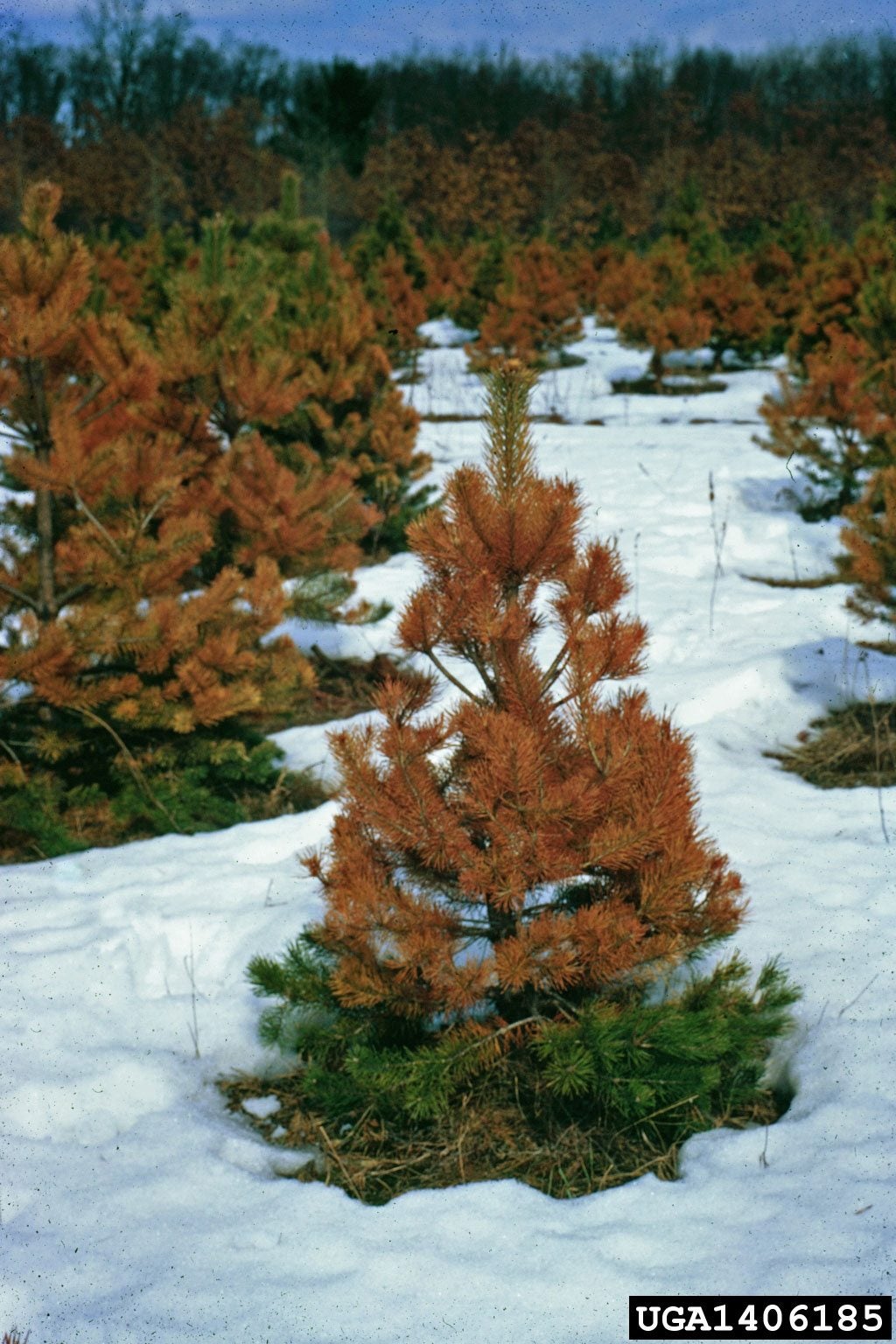What Is Winter Burn: How To Care For Winter Burn In Evergreens


Spring gardeners may notice that some of their needled and evergreen plants have brown to rust areas. The foliage and needles are dead and appear to have been singed in a fire. This problem is called winter burn. What is winter burn and what causes it? The damage is from dehydrated plant tissues and occurs during winter when temperatures are frigid. Winter burn in evergreens is a result of a natural process called transpiration. Preventing winter burn will take a little planning on your part but it is worth it to protect the health and appearance of your plants.
What is Winter Burn?
When plants gather solar energy during photosynthesis, they release water as part of the process. This is called transpiration and results in the evaporation of moisture through the leaves and needles. When a plant is not able to replace the lost water due to drought or heavily frozen ground, they will dehydrate. Winter burn in evergreens can cause death to the plant in severe cases, but most likely results in foliar loss.
Evergreen Winter Damage
Winter burn shows up on evergreens as brown to red dry foliage or needles. Some or all of the foliage may be affected, with areas on the sunny side most severely damaged. This is because the sun's rays intensify the photosynthetic activity and cause more water loss. In some cases, the new terminal growth will die and buds may fall off plants, such as with camellias. Stressed plants, or those that were planted too late in the season, are especially susceptible. Evergreen winter damage is also most severe where plants are exposed to drying winds.
Preventing Winter Burn
The best method for preventing winter burn is to choose plants that are not as prone to this winter damage. Some examples are Sitka spruce and Colorado blue spruce. Situate new plants out of windy zones and water them well as they establish. Water during winter when soil is not frozen to increase moisture uptake. Some plants may benefit from a burlap wrap to insulate them from drying winds and help prevent excess transpiration. There are anti-transpirant sprays available but they have limited success in preventing winter burn.
Winter Burn Treatment
There is very little you can do to treat burned plants. The majority of plants will not be severely injured, but they may need a little help getting healthy again. Fertilize them with the proper application of food and water it in well. Wait until new growth has begun and then remove those stems that were killed. Provide a light application of mulch around the root base of the plant to help conserve moisture and impede competitive weeds. The best idea is to wait for a while and see if the damage is permanent before embarking on any winter burn treatment methods. If winter burn in evergreens is persistent in your area, consider erecting a windbreak of some kind. Remove trees that succumb to evergreen winter damage before they become magnets for insects and disease.
Gardening tips, videos, info and more delivered right to your inbox!
Sign up for the Gardening Know How newsletter today and receive a free copy of our e-book "How to Grow Delicious Tomatoes".

Bonnie Grant is a professional landscaper with a Certification in Urban Gardening. She has been gardening and writing for 15 years. A former professional chef, she has a passion for edible landscaping.
-
 Try The Trend – Turn Any Bed Into A Keyhole Garden With This Clever In-Ground Composter
Try The Trend – Turn Any Bed Into A Keyhole Garden With This Clever In-Ground ComposterKeyhole gardening is an efficient and sustainable practice that saves space. Get started on this DIY project quickly and easily with an in-ground composter.
By Bonnie L. Grant
-
 4 Superfast Composting Methods: Turn Waste Into Garden Gold In 30 Days Or Less
4 Superfast Composting Methods: Turn Waste Into Garden Gold In 30 Days Or LessTry the fastest composting methods to turbocharge your pile and transform kitchen scraps and garden waste into finished compost in just a few weeks.
By Mary Ellen Ellis